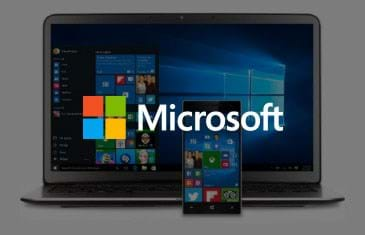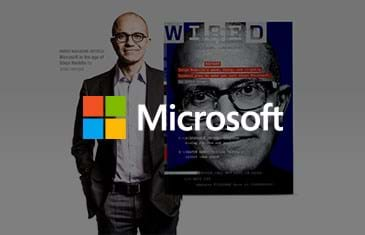Don’t believe the hype: Microsoft gets real about AI
Context: Microsoft and the artificial intelligence conversation
Artificial intelligence was once the stuff of science fiction, but now it’s an everyday reality. With improved accessibility, businesses and consumers are starting to appreciate AI’s ability to augment human ingenuity, rather than replace it.
Microsoft has been integrating AI across its diverse set of products and services for years but understanding of this assimilation was limited. Even as the discourse around AI shifts away from man-versus-machine, the average tech buyer still grapples with an unclear, scattered and oversaturated conversation around AI and its role in powering everything — from digital assistants to big data, to smart cities and the Internet of Things. And major tech players like Amazon, Facebook, Google and IBM were dominating headlines — feeding into the hype and unrealistic expectations that have long defined AI coverage.
Inspiration: Making artificial intelligence accessible
Within this challenging landscape, Microsoft launched the Artificial Intelligence and Research (AI+R) group in September, 2016, and followed quickly with its first dedicated AI communications program. In close partnership with WE, the program aimed to establish Microsoft as a leader in AI accessibility —delivering tangible results and real impact for individuals, organizations and society.
Our goals were clear: capture a greater share of voice in media and social spheres, become a leading resource for journalists on the topic of AI, and create greater awareness for the role of AI in Microsoft’s resurgence and growth strategy.
Insight: Microsoft’s quiet revolution in AI
WE dove in, conducting a comprehensive media audit to identify the greatest opportunities for engagement, coverage and social amplification. In parallel, Microsoft designed a new branding architecture to simplify the complex matrix of Microsoft AI products and services into three pillars: a powerful technology platform, leading innovation and a trusted approach. These pillars informed our communications strategy, which we rooted in differentiation, innovation and thought leadership.
“Because Microsoft could be perceived as late to the AI market, we needed to demonstrate how the company has been strategically driving a quiet revolution in AI,” said Scott Friedman, executive vice president at WE Communications. “The story needed to demonstrate how years of AI research were showing up in Microsoft’s products and services, backed by a strong vision for AI that is grounded and pragmatic to counter the sensationalistic, confusing media discourse.”
Action: Artificial intelligence for everybody
Our stories focused on two key aspects of Microsoft’s suite of AI products and services: the brand’s effort to make AI more accessible and easy to use for everybody, and its prioritization of both productivity and creativity, for individuals as well as organizations. Stories zeroed in on Microsoft’s commitment to improving how systems see, hear and understand information, and how that data ultimately improves people’s lives at work and home.
WE shared projects like AI for Earth (systems that tackle environmental issues), Seeing AI (helping the sight-impaired) and Project Emma (a watch prototype helping a Parkinson’s patient regain the ability to write) with the media, resulting in massive positive exposure for Microsoft AI. On the social and digital front, a Microsoft AI website was launched, with blogs and videos that helped explain Microsoft’s point of view on artificial intelligence. And to highlight how Microsoft builds AI on a foundation of trust, Microsoft and WE created an event that showcased the company’s approach to ethical design of AI systems.
Impact: Microsoft as a forerunner in artificial intelligence
Our communications efforts helped to position Microsoft’s AI strategy and offerings as more approachable and less abstract, demonstrating real-world applications of AI and establishing Microsoft as a go-to resource for understanding AI in the future.
Within 10 months of announcing the Microsoft AI+R Group, the company jumped from fifth to second in share-of-voice within key publications and influential stories. The number of AI stories per quarter that included Microsoft increased from less than 700 to more than 1,600 within two quarters, with social sharing jumping from 179,000 to 772,000. Landmark stories about Microsoft AI were published by WIRED, BBC Newsnight, Mashable, Forbes and others.
Stories covered the integration of AI into Microsoft products and services, the innovation driving the future of AI, and thought leadership on the issues and societal impact of AI, with Microsoft executives and researchers positioned as trusted sources and voices of reason within an over-hyped landscape.
And the release of Microsoft CEO Satya Nadella’s book, Hit Refresh, helped establish AI as a key component of Microsoft’s resurgence and transformation.
“Our communications strategy is all about demonstrating Microsoft’s pragmatic approach to AI and how that is fundamentally changing how we interact with technology and improving our lives in so many ways,” said Letty Cherry, Senior Director, Microsoft AI & Data Communications at Microsoft. “Our shared sense of purpose all comes back to empowering people and organizations around the world to achieve more — a mission we are deeply committed to.”
It doesn’t take a genius—human or otherwise—to see the value in that.




